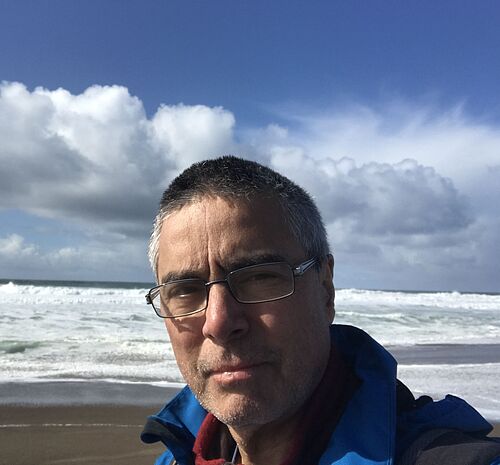
Fraunhofer WKI
Department of Material Analysis and Indoor Chemistry
Riedenkamp 3
38108 Braunschweig, Germany
Phone +49-531-2155-213
Tunga Salthammer earned a Doctor of Natural Science degree (Dr. rer. nat.) in Physical Chemistry from the Technical University of Braunschweig, Germany. He joined the Fraunhofer WKI in 1990 and was head of the Department of Material Analysis and Indoor Chemistry from 1996 until 2021. From January 2010 until October 2010, he was the acting director of WKI, and since March 2011, he is the deputy director of the institute. From 2003–2009, he was a Professor of Indoor Hygiene at the University of Applied Sciences Braunschweig/Wolfenbüttel. Since 2007, Salthammer has been an Adjunct Professor at the Queensland University of Technology in Brisbane, Australia. In June 2008, he received his habilitation from the Faculty of Life Sciences at the Technical University of Braunschweig and was appointed as a Professor in December 2012. Salthammer has been a Visiting Professor at the Technical University of Denmark in Lyngby, Tsinghua University in Beijing and Central South University of Forestry and Technology, Changsha. He is a member of the Indoor Air Hygiene Commission (IRK) of the German Federal Environment Agency (Chairman 2012 - 2021) and a guest member of the German Committee on Indoor Air Guide Values (AIR). Since 2008, he has been serving as an elected member of the ISIAQ Academy of Fellows (President 2014-2016) and received the Academy’s Pettenkofer Award in 2020. Salthammer served on the ISIAQ Board of Directors from 2003 - 2006. His research interests include analytical chemistry, emission, partitioning and dynamics of VVOCs, VOCs and SVOCs in the indoor environment, indoor chemistry, airborne particles, and settled dust.
Salthammer T. Mentese S., Marutzky R. (2010) Formaldehyde in the indoor environment. Chemical Reviews 110, 2536-2572.
Schripp T., Markewitz D., Salthammer T. (2013) Does the consumption of e-cigarettes cause passive vaping? Indoor Air, 23, 25-31.
Morawska L., Afshari A., Bae, G.-N., Buonanno G., Chao C., Hänninen O., Hofmann W., Isaxon C., Jayaratne E.R., Pasanen P., Salthammer T., Waring M. and Wierzbicka A. (2013) Indoor aerosols: from personal exposure to risk assessment. Indoor Air 23, 462-487.
Uhde E., Salthammer T. (2007): Impact of reaction products from building materials and furnishings on indoor air quality – A review of recent advances in indoor chemistry. Atmospheric Environment, 41, 3111-3128.
Wensing M., Uhde E., Salthammer T. (2005) Plastics additives in the indoor environment: flame retardants and plasticizers. The Science of the Total Environment, 339, 19-40.
Salthammer T. (2013) Formaldehyde in the ambient atmosphere: From an indoor pollutant to an outdoor pollutant? Angewandte Chemie Int. Ed., 52, 3320-3327.
Weschler C.J., Salthammer T., Fromme H. (2008) Partitioning of phthalates among the gas phase, airborne particles and settled dust in indoor environments. Atmospheric Environment, 42, 1449-1460
Morawska L., Li Y., Salthammer T. (2024) Lessons from the COVID-19 pandemic for ventilation and indoor air quality. Science, 385, 396-401, DOI: 10.1126/science.adp2241.
Zhao J., Salthammer T., Uhde E., Antretter F., Shaw D., Carslaw N., Schieweck A. (2024) Long-term prediction of the effects of climate change on indoor climate and air quality. Environmental Research, 243, 117804, DOI: 10.1016/j.envres.2023.117804.
Salthammer T. (2024) Carbon monoxide as an indicator for indoor air quality. Environmental Science: Atmospheres, 04, 291-305, DOI: 10.1039/D4EA00006D.
Salthammer T. (2024) The reliability of models for converting indoor formaldehyde concentrations under different environmental conditions. Building and Environment, 247, 111041, DOI: 10.1016/j.buildenv.2023.111041.
Morawska L., Allen J., Bahnfleth W., Bennett B., Bluyssen P.M., Boerstra A., Buonanno G., Cao J., Dancer S.J., Floto A., Franchimon F., Greenhalgh T., Haworth C., Hogeling J., Isaxon C., Jimenez J.L., Kennedy A., Kumar P., Kurnitski J., Li Y, Loomans M., Marks G., Marr L.C., Mazzarella L., Melikov A.K., Miller S.L., Milton D.K., Monty J., Nielsen P.V., Noakes C, Peccia J., Prather K., Querol X., Salthammer T., Sekhar C., Seppänen O., Tanabe S.-I., Tang J.W., Tellier R., Tham K.W., Wargocki P., Wierzbicka A., Yao M. (2024) Mandating indoor air quality for public buildings. Science, 383, 1418-1420, DOI: 10.1126/science.adl0677.
Salonen H., Salthammer T., Castagnoli E., Täubel M. and Morawska L. (2024) Cleaning products: Their chemistry, effects on indoor air quality, and implications for human health. Environment International, 190, 108836, DOI: 10.1016/j.envint.2024.108836.
Täubel M., Castagnoli E., Salthammer T., Morawska L., Salonen H. (2024) The impact of cleaning on the microbiomes of indoor surfaces. Indoor Environments, 1, 100021, DOI: 10.1016/j.indenv.2024.100021.
Salthammer T. (2024) Assessment of methods for predicting physical and chemical properties of organic compounds. Indoor Environments, 1, 100031, DOI: 10.1016/j.indenv.2024.100031.
Morawska L. and Salthammer T. (eds.) (2003): Indoor Environment: Airborne Particles and Settled Dust. WILEY-VCH, Weinheim.
Salthammer T. and Uhde E. (eds.) (2009): Organic Indoor Air Pollutants, 2nd Edition. WILEY-VCH, Weinheim.
Schieweck A. and Salthammer T. (2013) Schadstoffe in Museen Bibliotheken und Archiven, 2. Auflage. IRB-Verlag, Stuttgart.